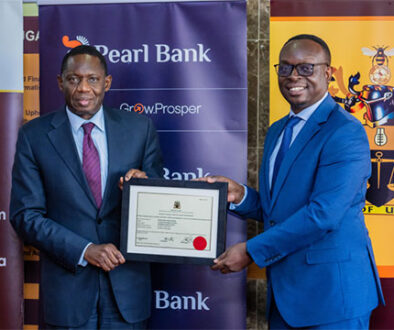Uganda’s coffee boom brews export

Uganda coffee
By Our reporter
KAMPALA – Uganda’s coffee industry is having a moment. Export earnings for the 2024/25 coffee year rose to US$2.3bn (Shs8.1 trillion), a 64% jump on the previous year, according to the Uganda Coffee Development Authority (UCDA). Export volumes climbed nearly 30% to 8.2 million 60kg bags—the highest in the country’s history.
Much of the growth stemmed from a fortuitous mix of improved weather, sustained investment in replanting, and a bumper Robusta harvest. As Africa’s largest Robusta exporter, Uganda has capitalised on global supply squeezes. Poor weather in Brazil, the world’s dominant producer, restricted output, pushing prices up and giving Ugandan beans unusual leverage.
September provided a particularly strong finish. Exports for the month hit 844,949 bags, generating US$218.6m—a 56% rise in volume and a 48% increase in value compared with September 2024. Robusta accounted for most of the exports, but Arabica growers also enjoyed a windfall: shipments rose 166%, while value soared 280% year-on-year.
Average export prices stood at US$4.31 per kilogram, with premium Arabica from the Rwenzori region fetching US$9.4/kg. The gap between top-quality Arabica and the bulk of Robusta underscores opportunities for Uganda to move up the value chain, should it invest in processing and quality improvement.
But beneath the upbeat numbers lie structural vulnerabilities. Uganda’s exporter base, though expanding, remains concentrated: ten firms handled 69% of September’s shipments. Concentration may aid efficiency, but it exposes the sector to coordination risks.
UCDA cautions that long-term competitiveness will require investment in irrigation, domestic processing, and climate adaptation, rather than reliance on favourable weather or temporary market tightness.
Government interventions appear to be bearing fruit. Expanded seedling distribution, farmer training, and the adoption of higher-yielding varieties have improved both quantity and quality. But sustaining growth will demand more than cyclical good fortune. Value addition and infrastructure investment are crucial if Uganda wants to avoid being merely a raw-bean exporter.
This development comes barely two months after the European Union postponed the proposed implementation of a law that would have banned imports of agricultural products—including coffee—from deforested land, to an unknown date. The proposed postponement of the EU’s flagship Deforestation Regulation (EUDR) was the second. On October 2, 2024, the Commission adopted a proposal to delay the implementation and enforcement date to December 30, 2025.
Beyond Uganda
Elsewhere in East Africa, fortunes differ. Rwanda recorded a 48% rise in export earnings to US$116.1m, aided by a 25% increase in production. Its focus on premium markets, rigorous quality controls, and marketing campaigns such as “Best of Rwanda Coffee” allowed the small producer to punch above its weight.
NAEB CEO Claude Bizimana attributed the gains to collaboration with farmers and targeted support. “We have focused on working closely with farmers, providing them with high-quality seeds, helping them access fertilisers at reduced costs, and teaching them innovative ways to cope with climate change,” he said. “So far, more than 4,100 hectares have been replanted, with an additional 1,000 hectares planned annually.”
Ethiopia remains the regional heavyweight. In 2024/25, it earned a record US$2.653bn from nearly 469,000 tonnes of coffee exports. Economic reforms, tighter regulations—including a 15m-birr (US$97,019) capital requirement—and rising global demand reinforced its market position. Adugna Debela, Director General of the Ethiopian Coffee and Tea Authority, hailed the achievement but highlighted further potential: “While this is a remarkable achievement, there remains significant untapped potential ahead.”
Kenya, by contrast, continues to struggle. Production is projected at 750,000 bags, with exports at 720,000. Ageing trees, weak extension services, and inconsistent reforms weigh on output. Still, high-altitude Kenyan Arabica commands premium prices, suggesting that revival is possible with sustained policy support.


